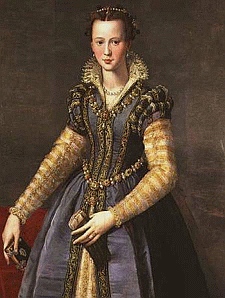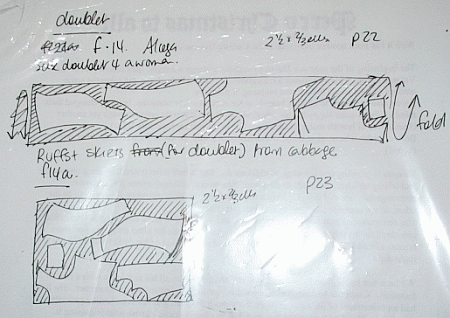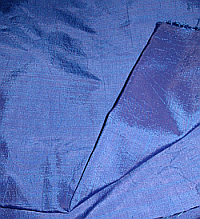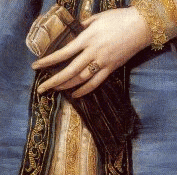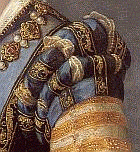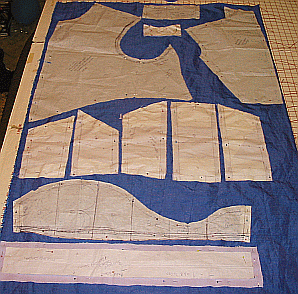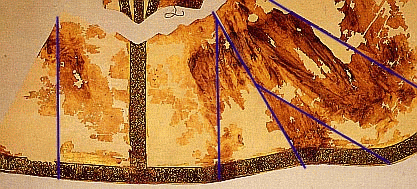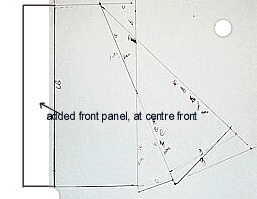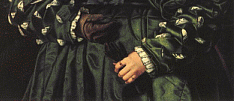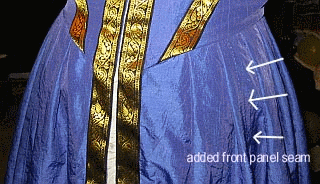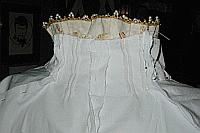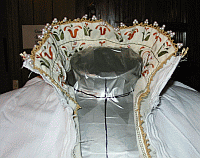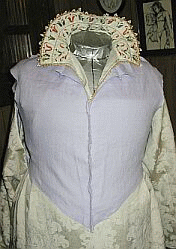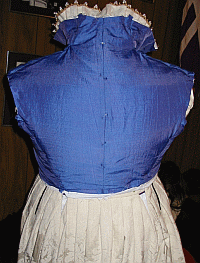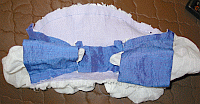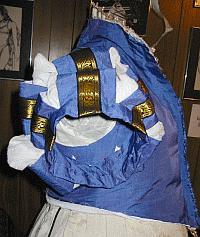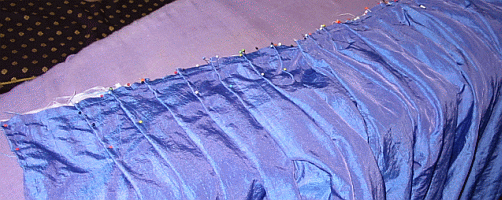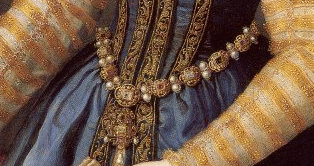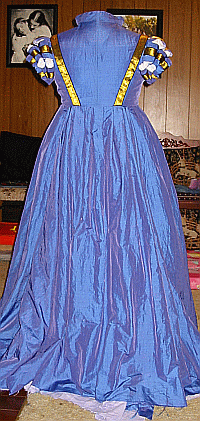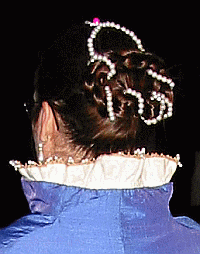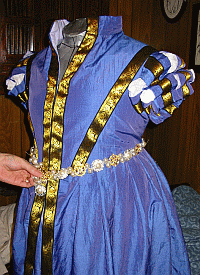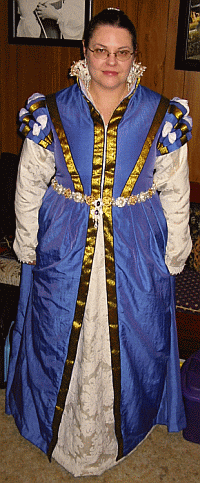|
I draped a toile, as seen above, based on Eleanor d'
Toledo's extant burial dress and patterns in Alcega's
pattern book. This can be seen to the right where the
pattern pieces are pinned to the overdress material. At the
very top (centrally) is the back collar. To the left and
right top, are the main pieces of the doublet-style dress.
Next, are 5 of the six panes (the other is between the
armholes of the doublet pieces) for the sleeves. Further
down is the undersleeve to support the panes and fake
chemise puffs. Finally, at the bottom, is the sleeve cuff.
Skirt:
The skirt pieces were made, as in Eleanor d' Toledo's dress,
based on her extant burial dress and Alcega's patterns. This
overdress is a culmination of what I have learnt making a
1516 Florentine, 1525 Italian dress research and Eleanor of
Toledo.
The main difference between the pattern left and the
final pattern for this overdress is the front opening and
the added portion at the fronts to give more 'bulk' and
extra pleats near the front. (below right)
|
